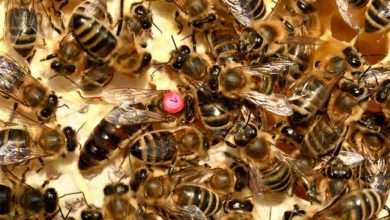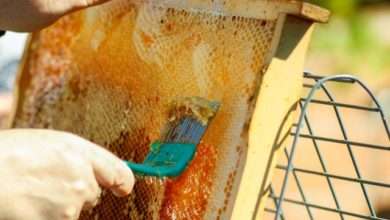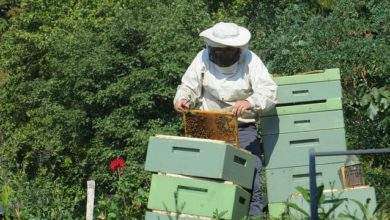Should You Install a Hive Heater?
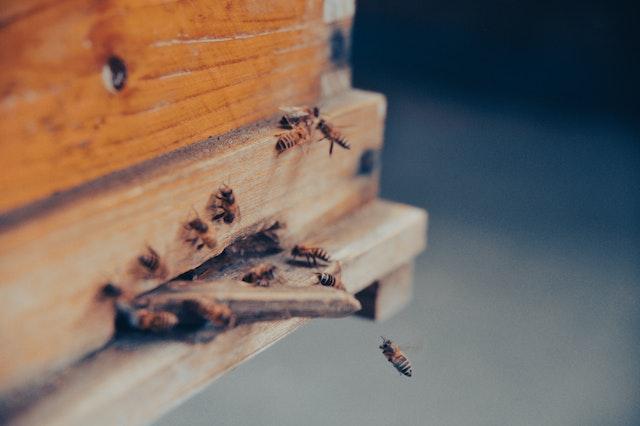
The honey bees’ ability to survive the winter is significantly influenced by the temperature of the beehive.
Beekeepers employ a variety of techniques to keep the winter clusters warm and able to travel to the honey stores.
The usage of hive heaters is one of these strategies. The greatest beehive heaters that are currently available to beekeepers are covered in this article. They were specifically designed and created by their producers to provide you with excellent results and a well-heated beehive during the winter.
It is frequently necessary for electric beehive heaters to be portable in order to be powered. Because of this, the direct current has become more popular in the creation of beehive heaters.
Alternating current systems can be effectively modified, although in many situations it is difficult to deliver electricity to the hive during the winter. Beekeepers with knowledge of how to set up such systems can build their DIY beehive heating systems, whether they are seasoned professionals or newbies.
The most popular and widely available electric beehive heater versions are powered by DC power. They work with a fully charged automobile battery.
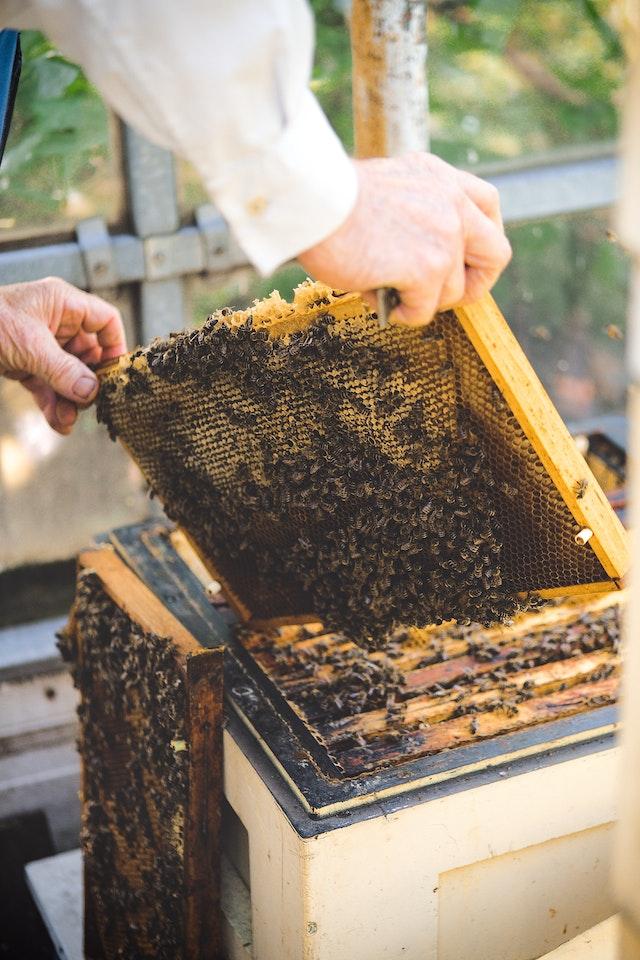
Beehive heaters frequently have heating elements. Different locations in the beehive can accommodate the element. There are some that fit in the spaces in between the frames, while others are better suited to the beehive box’s wider cavity.
To use the heater of your choice, you might need to make some modifications to the beehive. Beehive warmers are primarily utilized when a frame is missing when there is an extra beehive box present, or when they are placed on top of the frame.
Additionally, without endangering the bees or the beehive’s structural integrity, beekeepers can place the heaters where they think they would function best.
How To Keep Beehive Warm?
It is recommended to use a variety of beehive management techniques to keep the hive warm over the winter. When kept properly, a beehive experiences little winter suffering and emerges from it in the spring with a colony that is completely functional.
A poorly maintained beehive, on the other hand, may have a very weak or dead colony by the time spring arrives if there are too many honey bee deaths during the winter.
One or more of these strategies may be used concurrently. When you have several of them keeping the beehive warm in winter, it is fantastic for the honey bee colony even when you are completely unable to practice.
The beehive can be heated in a variety of ways, including the following:
Moving the beehive to a warmer location
The beehive can be moved to a different place during the winter to keep it out of the elements. To prevent your bees from getting too cold in the winter, try indoor beekeeping.
Snow cannot fall on the beehives because of the enclosed area. Additionally, it can be maintained at a comfortable temperature for the bees housed in indoor hives. Mesh is typically used in indoor beekeeping structures since they are designed to facilitate the bees’ movement to the outside.
The ventilation of interior apiary spaces can also benefit from the mesh. It might not be practical to shift all of your beehives if you run a large beekeeping company. If these beehives are properly managed, it is still acceptable to let them spend the winter outdoors.
Using a beehive windbreak
It is ideal to provide beehives with a windbreak when you can’t transfer the hives from the field. This could be a building or another object that keeps the beehive from being directly impacted by the wind.
The beehive is extremely susceptible to cooling from any winds that come into touch with it. It is important to rotate the beehive entrance so that it faces away from the predominant wind direction.
The finest outcomes can be achieved when it is done in conjunction with the reduction of entrances. Although they must be at a magnitude that the beekeeper has approved, air currents into the beehive can aid in ventilation.
Smaller entrances
Entrances are permitted to be left open throughout the warm months of the year so that honey bees can enter and exit the beehive simultaneously.
However, bees are not particularly interested in leaving the beehive during the chilly winter. They merely require occasional cleansing flights. Therefore, a smaller entrance is required to enhance hive security and lessen the entry of air currents. There are numerous entrance reducers available for this purpose.
Sometimes it’s important to shut some of the entrances at the bottom of the beehive and leave others open in higher areas. Lower entrances may be blocked by snowfall and serve as points of entry for small animals and water from melting snow.
Providing Proper Ventilation
When winterizing a beehive, ventilation is crucial and needs to be taken into account. It is forbidden for the beehive’s inside air to continue to be more humid than its exterior air. If such occurs, the beehive may easily experience condensation.
When airborne water cools, it either freezes or condenses into droplets on the top beehive surfaces. The bees are then chilled as a result of these droplets. When the condensation is too extreme, entire colonies of honey bees have perished in this way.
Beekeepers can prevent condensation from occurring in the beehive by using ventilation and humidity regulators like hive wraps.
In winterized beehives, ventilation apertures are designed to serve two purposes. Air can enter and exit the beehive through the aperture. When necessary, it also serves as a bee entrance. The beehive can have access to more than one aperture to accommodate these different needs in warmer climates with milder winters.
Providing enough space
To allow honey bee colonies to hibernate, provide ample space. Both the amount of room and the difficulty of fitting the entire colony should be moderate. The Langstroth beehive stack can be reduced in size for winter by removing one or two supers.
To avoid leaving the bees with insufficient space, you shouldn’t take out too many boxes. Adding an empty box to the beehive over the winter can occasionally be essential for feeding or other requirements.
Insulating the beehive
One method of heat preservation in the winter is to insulate the beehive. Specialized wraps and covers are among the methods that are used.
The box beehive stack is encircled on all sides by the wraps. All during the winter, they are left on. If there is some wintertime daylight, the bee hive coverings could be painted a dark color to keep the bees warm.
Beekeepers can also find covers of various kinds. The beehive’s top or sides are protected from the elements by the coverings. Heat loss from the top of the beehive is prevented by insulated top covers.
In order to offer insulation, further slip-on DIY covers can be wrapped around the entire beehive. The best beehive coverings create a barrier between the outside air and the outside surfaces of the beehive boxes that is at least 10 millimeters thick.
Winter Feeding
Another strategy for ensuring the colony’s existence and the beehive’s warmth is to provide food to the honey bees. One answer is to provide protein patties for you colonies.
In order to maintain the temperature of the winter cluster, well-fed honey bees can generate heat in the hive. Slowly circling the honey in storage, the cluster moves. Bees consume all of the stored honey when there is not enough for them, at which point they starve to death.
Because of the extremely low temperature inside the beehive, the cluster occasionally is unable to proceed to the next section of frames containing honey. The cluster can wander around the beehive and onto new food sources when the honeybee colony is well-fed and able to keep the beehive warm enough.
Additionally, during the winter, feeding might assist in reducing the number of pests and parasites. This may occasionally become essential if the honey bee colony begins to be overrun by pests and parasites like mites.
Checking on the health of the colony
Be mindful of the outdoor temperatures, especially during the winter. Before it gets too cold, winterizing bees makes sense. Waiting until the beehive is already too cold to insulate or implement winterization measures is not recommended.
As soon as the honey bee colony has been properly winterized, you should be sure to check on its health.
A few brief inspections spaced out during winter can be done to accomplish this. In the event that there is a need for more frequent inspections, complete them as quickly as you can. An excessive loss of heat from the beehive is prevented by quick checks.
Benefits of Heating a Beehive
The beekeeper, the beekeeping business, and the honey bee colony inside the beehive can all benefit from heating a beehive.
The best way to enjoy these advantages is to heat the beehive along with other heat-saving techniques. The best recommendations for heating supplementation are insulation and entrance minimization. The following advantages of heating a beehive:
In the spring, the beekeeper is able to maintain a robust honey bee colony. The beekeeper will make more money as a result of the rise in beehive production. You will also be proud of yourself for successfully guiding a honey bee colony through a productive year.
The beekeeping business benefits from a robust colony emerging from the winter. Beehive products with better yields come from colonies that are healthy at the beginning of the production year.
Having a strong colony at the outset will also improve the management of the beehive over the remainder of the year. In the later part of the year, mite infestations are a difficulty that a strong colony can more easily overcome.
If a weak colony is killed, the beekeeper will have to find a new colony. The beekeeping business and its profitability suffer when it occurs.
Conclusion
There are numerous advantages and benefits of heating beehives in beekeeping. Above all, it significantly raises the likelihood that honey bee colonies will survive the winter.
Beehive heating is an investment that pays off for a beekeeping operation. When heating is required, beehive heaters can be used to keep the winter cluster of honey bees from starving to death.
Beehive heaters add only a small amount to the overall expense of maintaining the beekeeping operation because they are only needed seldom. To get the most out of wintering your honey bee colonies, use the knowledge in this article and the best beehive heaters review.
FAQs
Should beehives be insulated in winter?

In colder climates, insulation make sense. This function may be crucial for the winter months since the insulation will maintain heat within the hive and drain extra moisture. Wrapping can be harmful if done incorrectly, so think it over before you do it.
How do I keep my beehive warm in winter?
You can assist your honey bees by insulating the hive, but they will still work together to keep the colony warm. To stop too much cold air from getting into the hive, minimize the entrances.
You can provide additional insulation to your colonies with hive wraps, installing foam insulation boards, or erecting windbreaks around your apiary.
How cold is too cold for a beehive?
By working out and using energy, honey bees keep the interior of the winter cluster at a comfortable 95 degrees. The body temperature of a bee is 41 degrees before it expires. In order to stay warm at 41 degrees, the bee cannot move or flex its trembling muscles.
Honeybees keep the interior of their hive at a comfortable 97 degrees to ensure the survival of the colony after the temperature falls below 50 degrees.
Should I open my beehive in the winter?
When the temperature is below 40 degrees, opening the beehive to check on it is dangerous. Warm air leaves the hive when it is opened, and cold air comes in. There is still a way to check to see if the bees are still alive even though the majority of beekeepers do not peep inside their hives throughout the winter.
How many brood boxes do you need for winter?
Many beekeepers convert to one box during the winter, so you might wish to do the same. Although the queen will go to the top box to remain warm, you might use two in the winter. The colony’s growth may be slowed down by the difficulty of keeping double-brood boxes warm.
How much ventilation does a beehive need in winter?
Usually, all that is required is to drill a ventilation hole into the top corner of the upper brood box that is about one inch in diameter.
Do bees need water in the winter?
The need for water may be less in the winter, but bees still need it to thin out their honey storage and mix it with them before consuming or feeding it to their larvae. I think they use this water because, in the winter, a hive may become very condensation-filled, especially if it isn’t well-ventilated.
